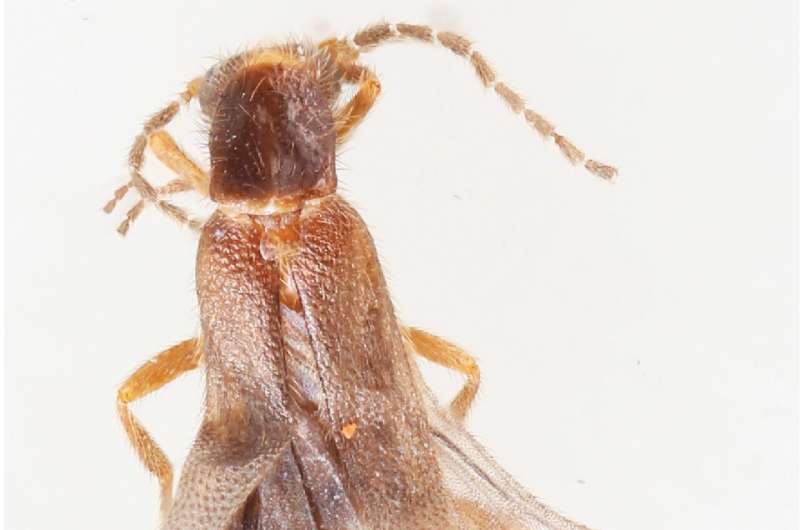This article has been reviewed according to Science X's editorial process and policies. Editors have highlighted the following attributes while ensuring the content's credibility:
fact-checked
trusted source
proofread
Researchers discover mysterious new beetle species in Guatemala

Together with a Brazilian–German team, Senckenberg researcher Vinicius S. Ferreira has described a new species from the glowworm beetle genus Adendrocera. This group of insects is rare and only documented by very few specimens in scientific collections.
In their study, published in the journal The Coleopterists Bulletin, the researchers named their new discovery from the family Phengodidae after the Carmelita cooperative. This Indigenous community in Guatemala has been working for many years to preserve the biodiversity around the site where the newly discovered species was found.
Only one species with a single specimen was previously known from the glowworm beetle genus Adendrocera—safely stored in the scientific collections of the Natural History Museum in London.
"Apart from this holotype, there were no other published specimens from this genus. However, our colleague Dr. Aslak Kappel Hansen from the Natural History Museum in Berlin was recently able to collect a second Adendrocera specimen on a trip to Guatemala.
"Unlike their relatives, these beetles do not have the feather-like antennae characteristic for the family Phengodidae. Together with André Roza Silva from the Universidade Federal do Rio de Janeiro, we have now studied these rare glowworm beetles in greater detail," says Dr. Vinicius S. Ferreira from the Senckenberg German Entomological Institute in Müncheberg.
In their study, the scientists describe the recently found animal as a new species: Adendrocera carmelita. The medium to dark brown beetle, which is only 3.5 millimeters long, was collected in the tropical lowland rainforest using a flight trap.
"The study area is a protected nature reserve and is rich in tree species, including large mahogany trees," explains Ferreira. "Unfortunately, it has not yet been possible to observe living specimens of the new species—therefore, we are currently lacking any data on its lifestyle, diet, or reproduction."
The species, which originates from Guatemala, was named after the "Carmelita" cooperative, which helps to preserve the biodiversity around the species' type locality in the Maya Biosphere Reserve.
Founded in 1998, the "Cooperativa Integral de Comercialización Carmelita R.L." carries out various activities within the community that enable the sustainable management of existing resources. This includes, for example, investments in the prevention and control of forest fires, eco-tourism in the nature reserve, and a sustainable timber harvest.
"With minimal intervention, the cooperative is thus able to implement agroforestry and tourism activities that secure a livelihood for the local community while at the same time providing an incentive to protect the natural forest.
"We wanted to honor this achievement for the preservation of biodiversity with the name we chose for the new species," adds Ferreira.
More information: André Silva Roza et al, Redescription of Adendrocera Wittmer, 1976 (Coleoptera: Phengodidae: Penicillophorinae) with Description of a Second Species of the Genus from Guatemala, The Coleopterists Bulletin (2024). DOI: 10.1649/0010-065X-78.2.155


















